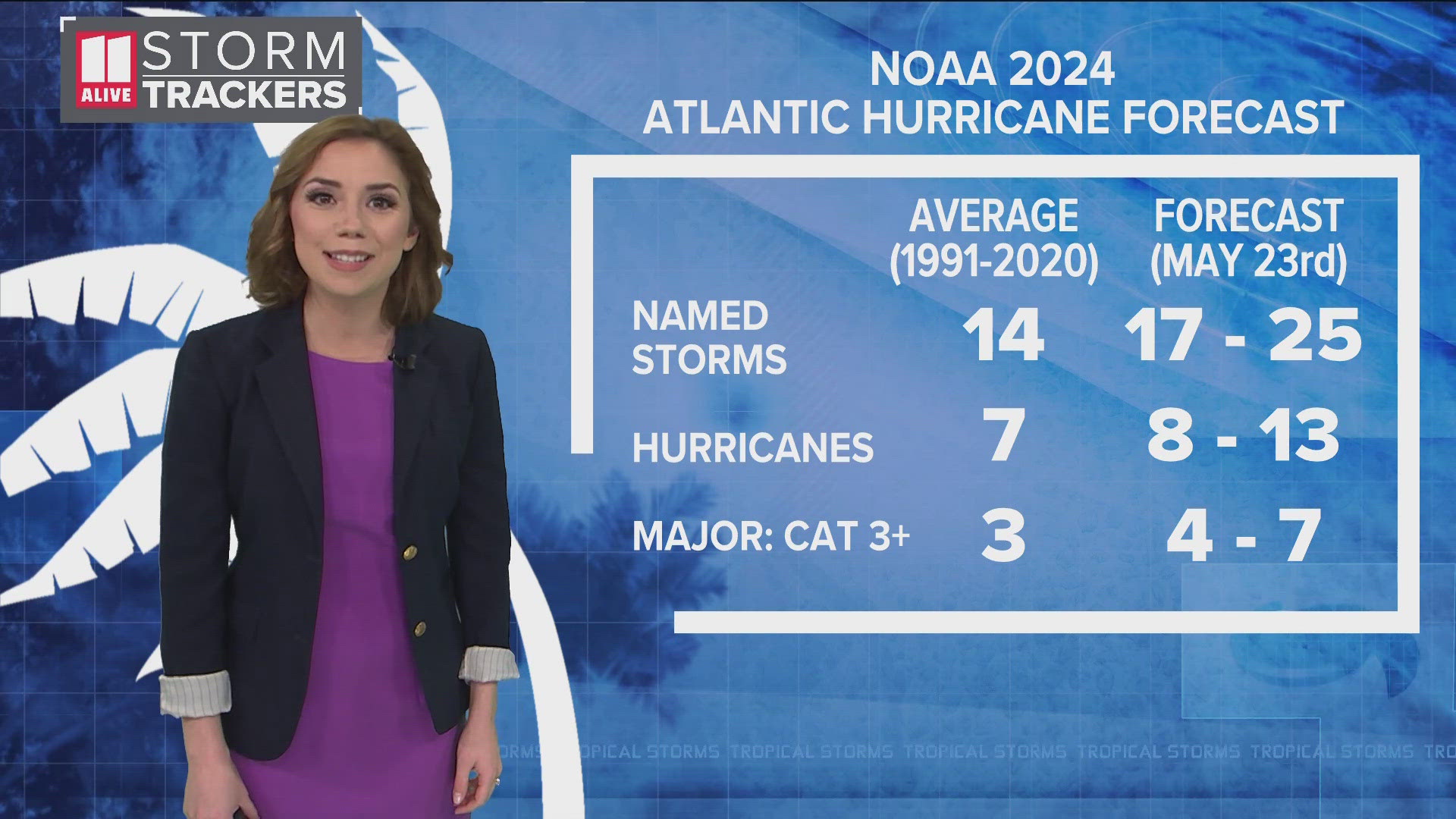GEORGIA, USA — Even though in some past years we have had some tropical storms named in May, the Atlantic Hurricane Season doesn't officially begin until June 1st.
This means the season begins Saturday for the Atlantic Basin, and fortunately, according to the National Hurricane Center, it is quiet with no chance of tropical development over the next seven days.

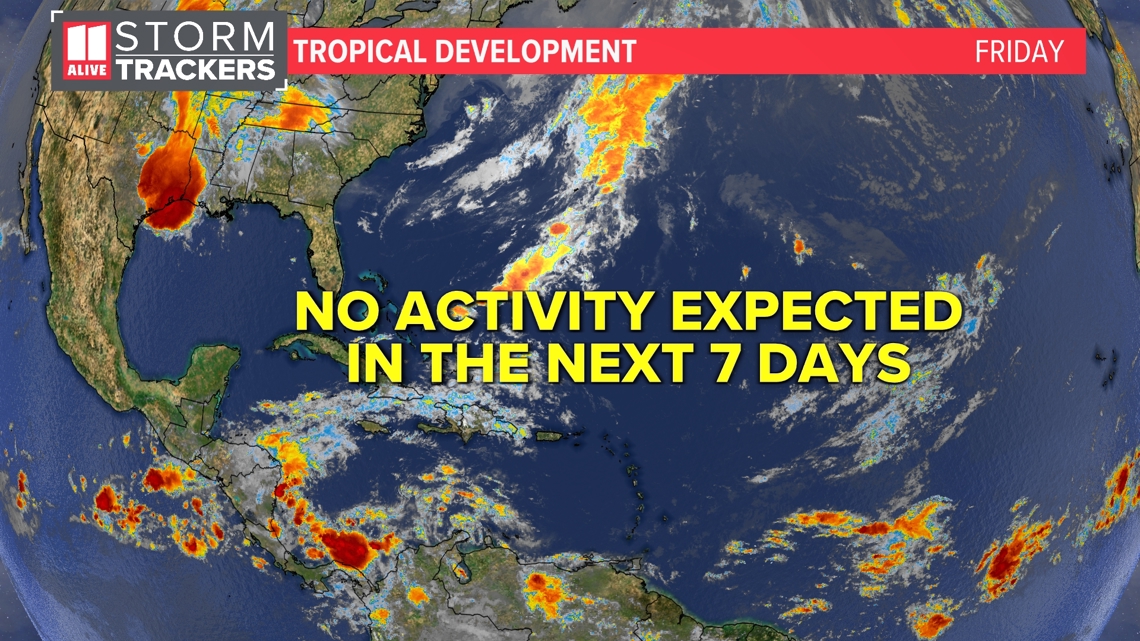
Just because the season is starting off quiet doesn't mean it will be a quiet season.
Typically, the season starts quiet, with the frequency of tropical development not really picking up until late July through early October, according to climatological data.
The climatological peak of hurricane season is September 10, and the season comes to an end on November 30.

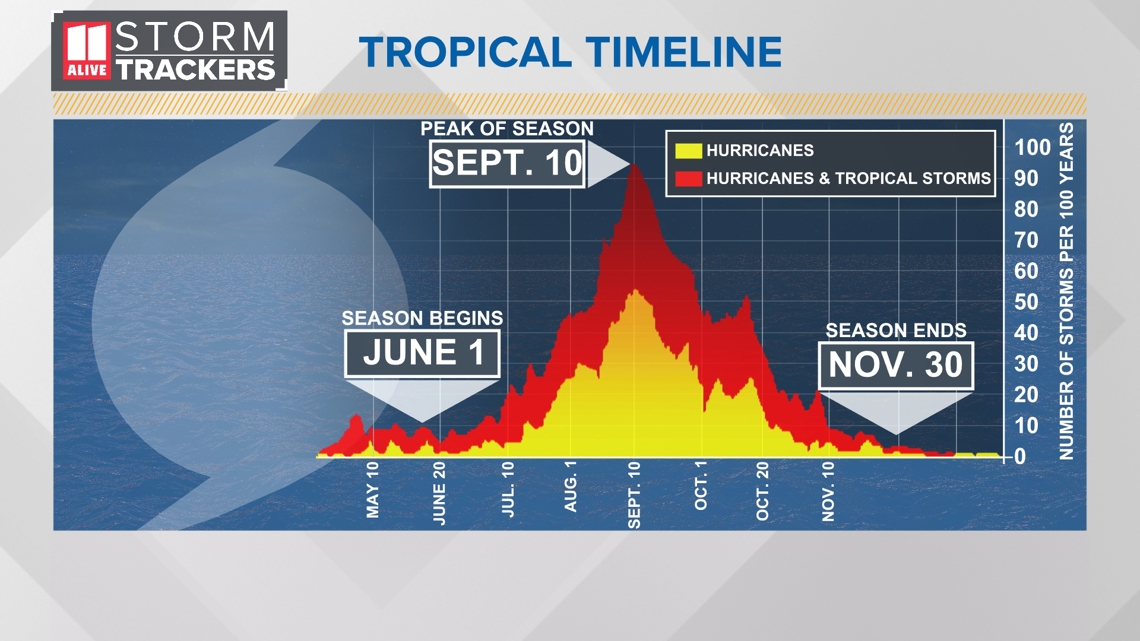
The National Oceanic and Atmospheric Administration predicts a well above-average season this year. On May 23rd, they released their 2024 season outlook.
NOAA has forecast 17 to 25 named storms when the average number is 14. They believe eight to 13 of these storms could intensify into a hurricane when the average number is seven. NOAA thinks four to seven of these storms could become a major category three strength or higher when the average is three.

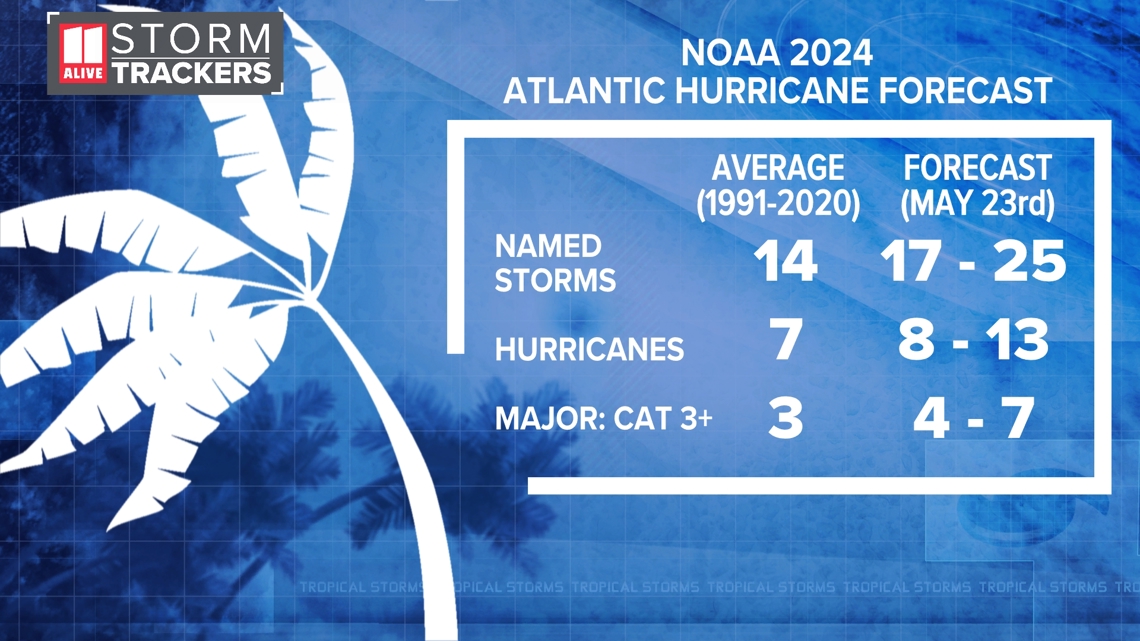
Colorado State University also released a forecast on April 4 that reflected what would be a well above-average season.
Their forecast calls for 23 named storms, 11 becoming hurricanes and 5 becoming major hurricanes.

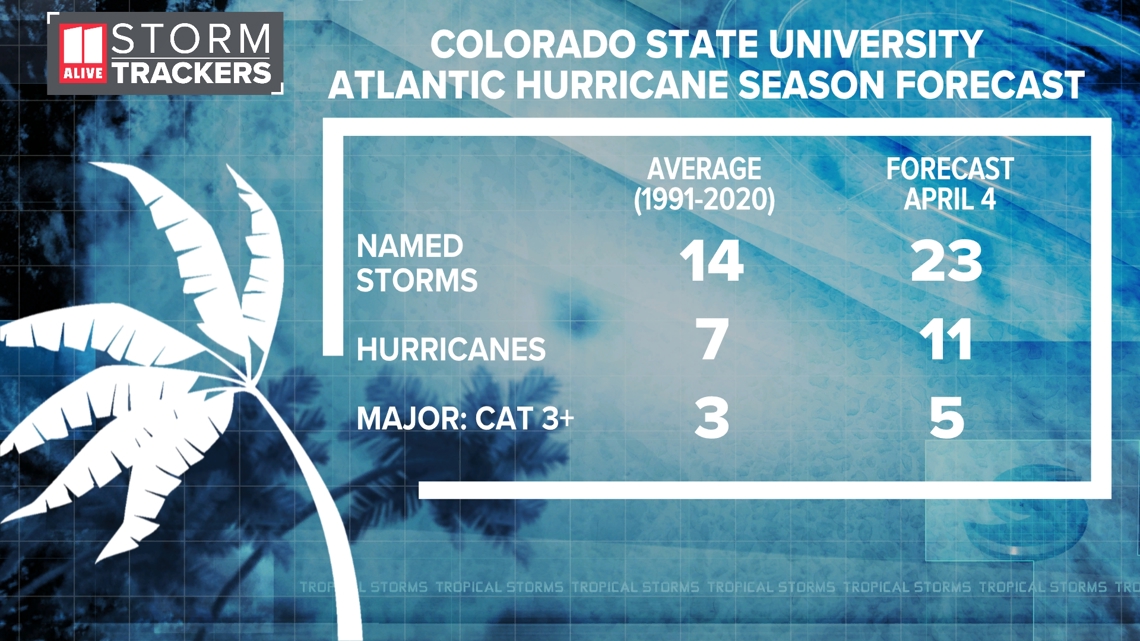
Both groups cite very warm water in the Atlantic, which fuels storm development and growth. They also note the development of a La Niña pattern and a movement away from El Niño, which typically means lower wind shear in the Caribbean. Lower wind shear can help create a healthier environment for tropical development.

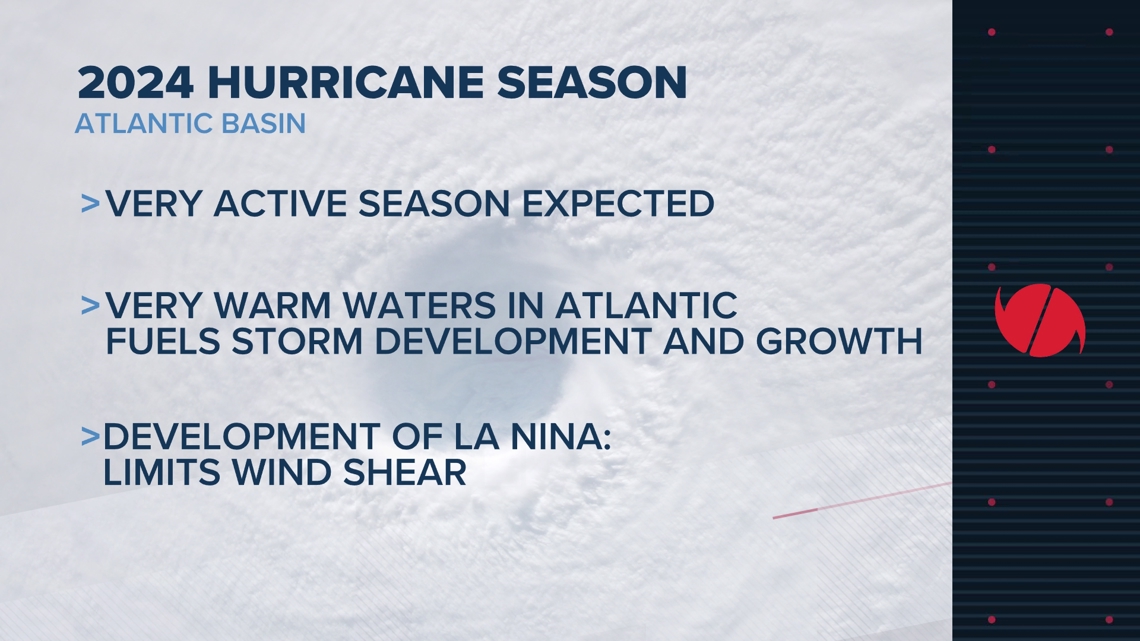
We haven't had any named systems as of the end of May, but when we do get our first named storm, it will be called Alberto. You may also notice there are only 21 names on the 2024 Atlantic Tropical Cyclone Names list.


If we use all of the names on the initial list, NOAA will then start using names from a supplemental list, beginning with Adria.

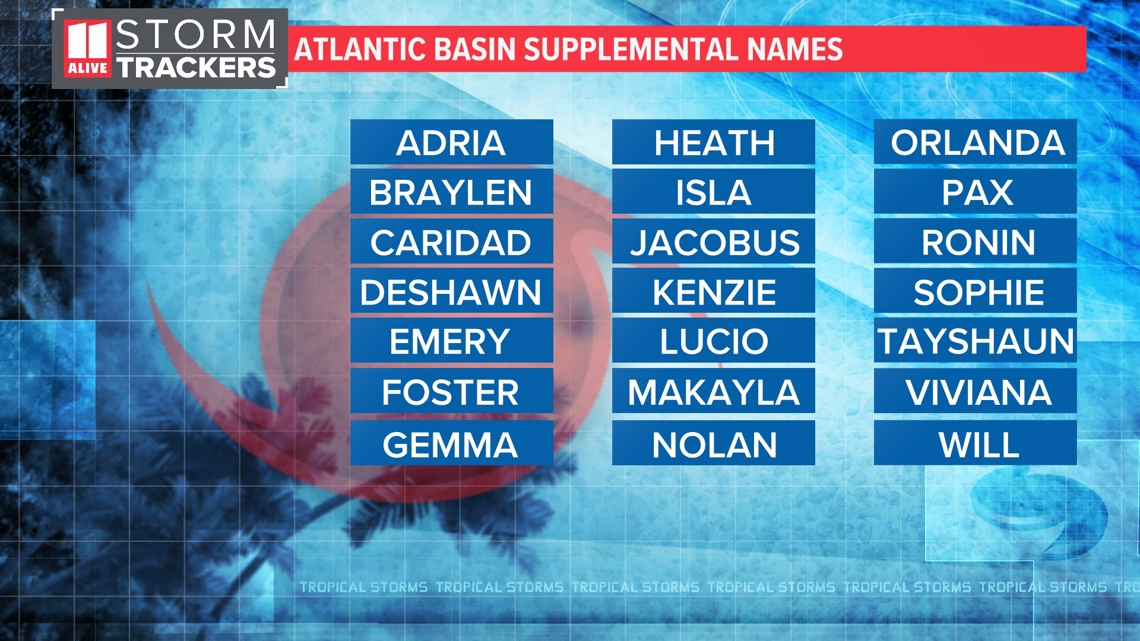
Based on climate data and past storms, tropical systems that form in June are more common in the Gulf of Mexico, pushing off to the north and northeast. This doesn't mean development here is certain, but it is more likely this time of year in these spots.


Remember, regardless of the number of named storms we have, it only takes one to leave a big impact. Be sure to have a plan in place before a storm arrives.
Stay tuned with the 11Alive Weather Team as we help guide you through Hurricane Season.

